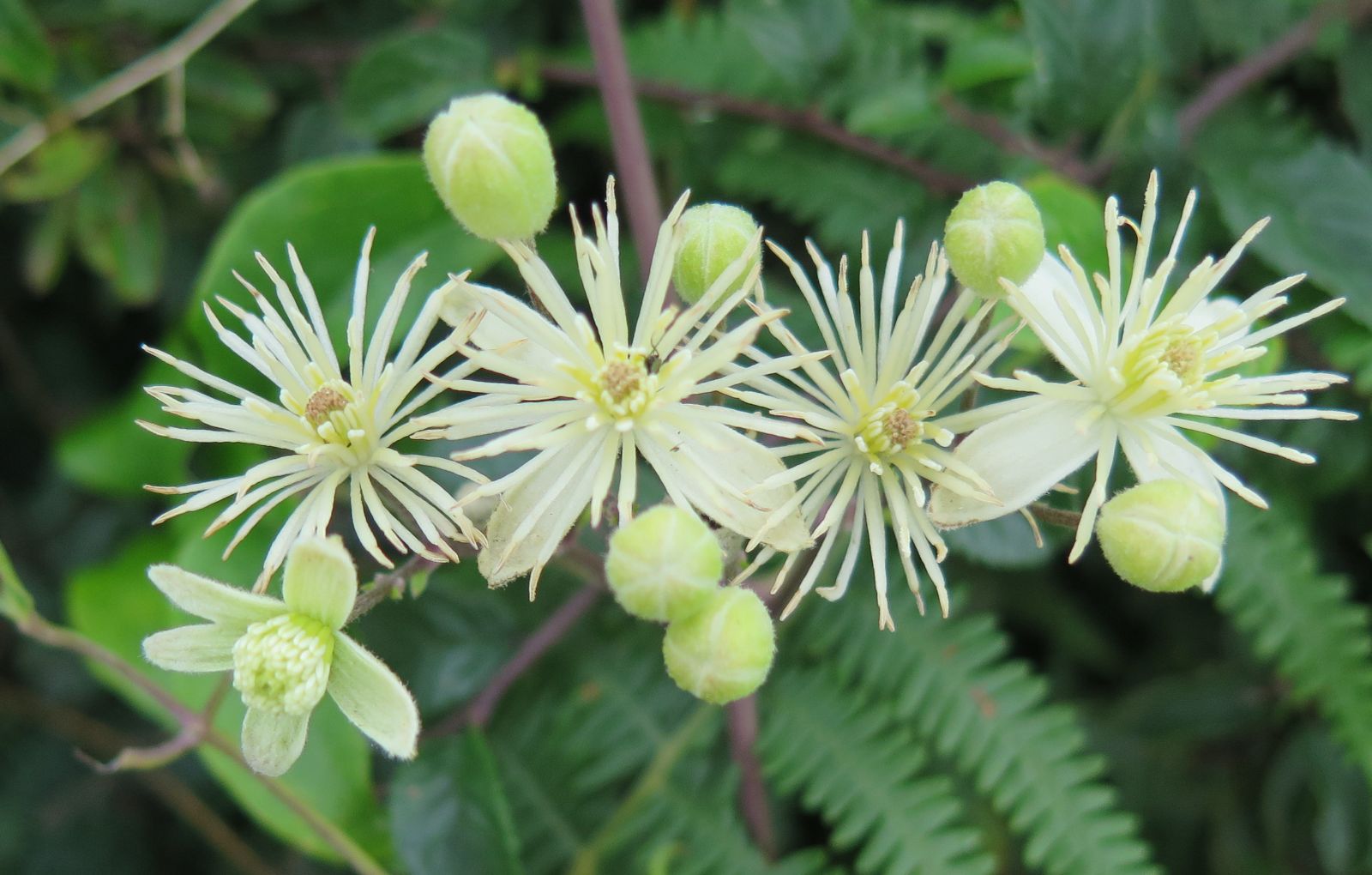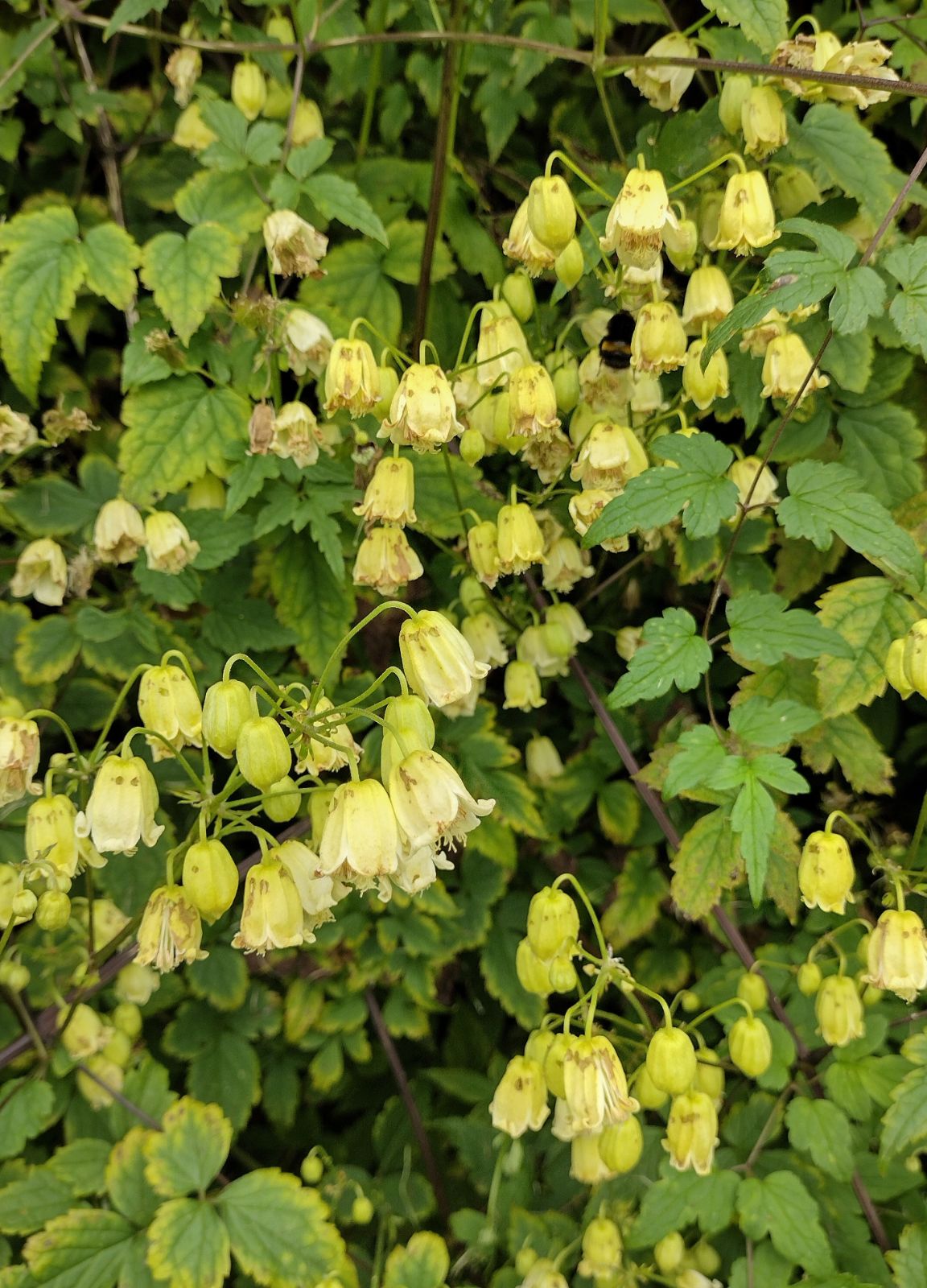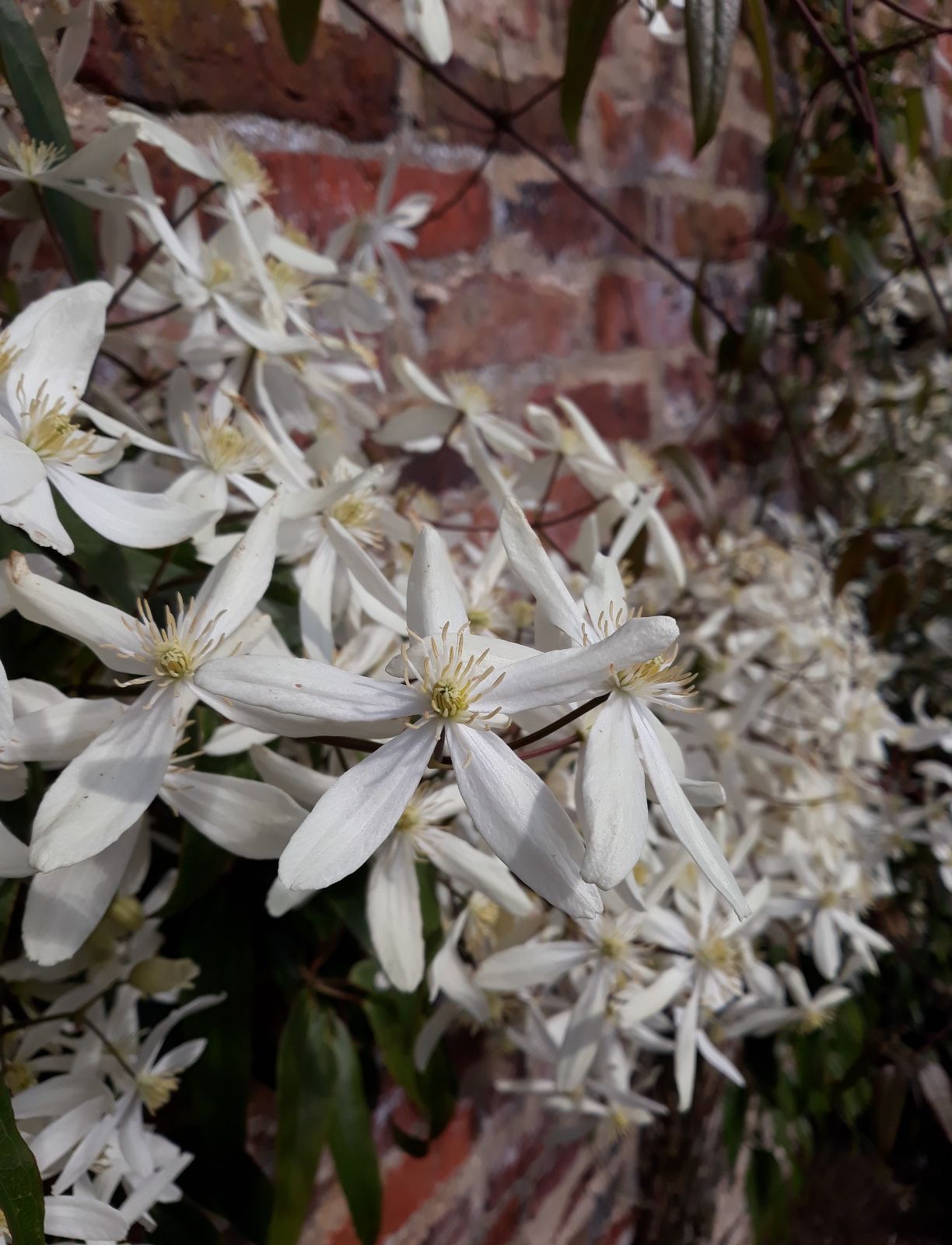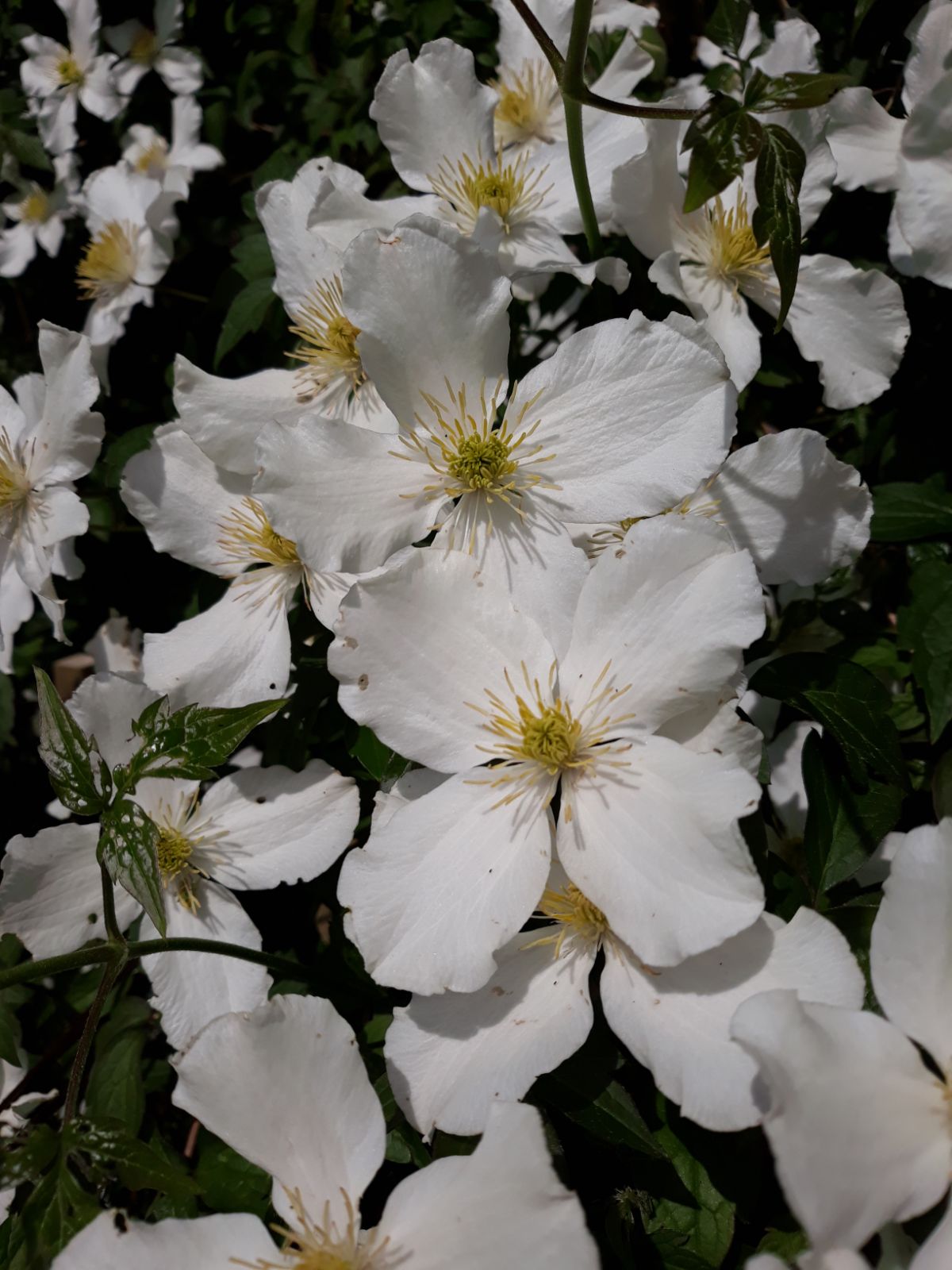Clematis
Credits
Article from Bean's Trees and Shrubs Hardy in the British Isles
Recommended citation
'Clematis' from the website Trees and Shrubs Online (treesandshrubsonline.
Family
- Ranunculaceae
Species in genus
- Clematis acutangula
- Clematis aethusifolia
- Clematis afoliata
- Clematis akebioides
- Clematis alpina
- Clematis apiifolia
- Clematis armandii
- Clematis × aromatica
- Clematis campaniflora
- Clematis chinensis
- Clematis chrysocoma
- Clematis cirrhosa
- Clematis connata
- Clematis crispa
- Clematis × durandii
- Clematis × eriostemon
- Clematis fargesii
- Clematis finetiana
- Clematis flammula
- Clematis florida
- Clematis fusca
- Clematis gracilifolia
- Clematis grata
- Clematis heracleifolia
- Clematis integrifolia
- Clematis × jackmanii
- Clematis × jouiniana
- Clematis lanuginosa
- Clematis lasiandra
- Clematis ligusticifolia
- Clematis macropetala
- Clematis maximowicziana
- Clematis meyeniana
- Clematis montana
- Clematis nannophylla
- Clematis napaulensis
- Clematis orientalis
- Clematis paniculata
- Clematis patens
- Clematis phlebantha
- Clematis pitcheri
- Clematis quinquefoliata
- Clematis ranunculoides
- Clematis rehderiana
- Clematis serratifolia
- Clematis songarica
- Clematis stans
- Clematis tangutica
- Clematis texensis
- Clematis tibetana
- Clematis uncinata
- Clematis × vedrariensis
- Clematis verticillaris
- Clematis viorna
- Clematis virginiana
- Clematis vitalba
- Clematis viticella
There are at present over two hundred species of Clematis known. They are spread more or less over all the great terrestrial regions, but the hardy ones are confined to Europe, N. Asia (especially China), and N. America. A New Zealand species, C. paniculata (indivisa), one of the most beautiful, is sometimes cultivated on walls in mild districts, but it is, strictly speaking, a greenhouse plant.
In habit, clematises vary from dwarf, herbaceous plants to woody climbers up to 60 or more feet high. The leaves are always in pairs at each joint, and are occasionally simple, but usually divided, consisting of the three, five, seven, nine, or perhaps fifteen leaflets. The climbing species support themselves by means of the leaf-stalks, which curl round any slender support available. In the absence of any such support they fasten on to each other, making an inextricable tangle. Whilst the clematises when in flower provide some of the most beautiful effects possible in gardens – excepting roses, they are our most extensive group of flowering climbers – the autumn and early winter effect is often deplorable. The leaves of many species do not fall off in autumn, but remain through much of the early winter black and unsightly. Nor are the early stages of decay enlivened by any bright colour.
Clematis belongs to the buttercup family, but is an anomalous member thereof, owing to the flowers having no petals. The showy, petal-like organs, usually four but up to eight in number, which give the flowers their chief decorative value, are sepals. There is one section of the genus, the Atragene section, sometimes kept up as a separate genus – which have between the sepals and stamens, one or more rows of petal-like organs which may be regarded as either petals or enlarged abortive stamens. There is considerable variation in the form of clematis blossoms. In the most popular forms, represented so abundantly in gardens by hybrids of C. patens, florida, and lanuginosa; also by species like montana and orientalis, the sepals spread out nearly or quite to their full extent. In another section, of which C. viorna is the type, the sepals form a pitcher-shaped flower; that is, they are connivent at the margins, so that the flower is rounded and swollen at the base, but narrows to a contracted mouth. In the Series Vitalbae, the flowers are small, very numerous, and produced in panicles.
The seed-vessel, popularly known as the ‘seed’, and to botanists as the ‘achene’, is terminated by the persistent style, which in many species is from 1 to 2 in. long, and clothed with long silky hairs, so that a plant in full fruit is often a striking object. The juice of several species is acrid, and has an inflammatory effect on the skin.
Cultivation. The natural habit of the climbing sorts is mostly among small trees and shrubs, over which they run. The flowering portions of the plant are therefore exposed to full sunshine, whilst the main stem and lower parts of the plant are often in shade; this is a point that should not be overlooked in the cultivation of the more delicate species on posts and pillars. In such positions it is advisable to place the plant with its base on the northern side of its support. Otherwise, the plants delight in full sunshine.
They all like a deep, moist root run and will not thrive on heavy clays or light sands unless the soil is carefully prepared. Whether they benefit from the addition of lime is a question on which leading growers are not agreed. It is certainly not essential and should not be applied in the neighbourhood of ericaceous plants.
The methods of pruning clematises depend on the position and space they are intended to occupy, and on their time and mode of flowering. Essentially there are three of these, 1. The early-flowering species like montana and macropetala must not be pruned in winter or early spring; whatever pruning is necessary should be done as soon as the flowers are past, and it should be done chiefly with relation to the space the plant is desired to occupy. C. armandii also flowers in spring on the previous year’s wood, but is not so vigorous as the deciduous kinds and should never be pruned severely. 2. Many of the large-flowered hybrids bear their main crop of flowers in early summer on short shoots from the previous year’s wood; these need little or no pruning but benefit from having the summer’s growths carefully spaced and trained. Many in this group produce a second crop of flowers on these growths and, at the sacrifice of the first crop, may be pruned as in the next group, thus throwing all the energy of the plant into the late summer flowering. 3. In this group the flowers are borne on the season’s growths from midsummer onwards. Some of the species and hybrids which belong here are herbaceous climbers or sub-shrubs and much or all of the summer’s stems dies back naturally during the winter to ground-level or near it. It is desirable to remove as much of this dead growth as possible. The species and hybrids of section Viorna, C. viticella, etc. belong here. Others, however, do not die back, or lose only part of their growths in winter, and, if left unpruned, would form in a short time a heavy tangle at the top of their supports whilst they become quite naked at the base. With these it is a good plan to prune a proportion at least of the stems well back, so that in breaking into new growth they provide a furnishing for their supports near the ground. Or they may be pruned as a matter of course to about 3 ft above the ground, leaving only a few buds of the previous summer’s growth.
The provision of support for clematises in gardens must remain a matter largely of discretion and opportunity. At Kew, where a collection of some forty to fifty species was at one time grown in close proximity, most of the climbing sorts were trained over untrimmed branches of oak or other wood stuck in the ground. Three or more of these were put in a bed, and the tops were fastened together so as to form a tent-like structure. The stronger species soon cover this when so grown, and in a few years a dense tangle of stems is formed which become almost self-supporting. For the species like viorna and fusca, which die back almost to the ground in winter, and send up shoots several feet long during the summer, ordinary pea-sticks are suitable. Pergolas, trelisses, and arbours are of course admirable places for most species, and the stronger species may be used for covering the butts of trees and mounds.
An imitation of the natural conditions under which many of the clematises live should more frequently be attempted in gardens. They should be planted near shrubs, over which they can climb. Such shrubs should not be of great value, or very rank growers. William Robinson adopted this system in his garden at Gravetye, with happy results.
The leaves of Clematis vary much in size and form on the same plant, so that some of the descriptions in the following pages must in both respects be taken as approximate. It is also difficult in this genus to draw a line between the shrubby climbers and the herbaceous sorts.
Whilst many of the species and simpler hybrids described in the following pages are of great beauty, it has to be admitted that the interest taken in clematises at the present time is chiefly centred in the large-flowered races raised by intercrossing within the Viticella group – C. lanuginosa, C. florida, C. patens, and C. viticella. Under these species, and C. × jackmanii, the role that each has played in the formation of these hybrids is more particularly alluded to. For further information see: Christopher Lloyd, Clematis (1965); Ernest Markham, The Large and Small Flowered Clematis (1951); Spingarn, The Large Flowered Clematis Hybrids in the American publication The National Horticultural Magazine, 1935, pp. 64–94; W. E. Pennell in Journ. R.H.S., Vol. 91, pp. 27–36; and the catalogues of leading growers.
The clematises, more especially the large-flowered hybrids, are subject to an affliction known as ‘Clematis Wilt’, which results in the rapid death of a shoot, frequently right down to the base. Affected plants are not killed outright and usually manage to produce a healthy shoot the next season, though this may in turn be attacked. Recent research by the Glasshouse Crops Research Institute indicates that a species of fungus is the probable cause of the disease; a full account of this work is given in their report for 1965. No definite control measures are known, but all dead shoots should be cut back to clean, living tissue, and the wounds, however small, should be painted with a good protective paint. Any new shoots which start to develop should be sprayed with a copper-containing fungicide, repeating two or three times at fortnightly intervals. For this information we are indebted to Miss Audrey Brooks, Plant Pathologist to the Royal Horticultural Society.
From the Supplement (Vol.V)
The following large-flowered cultivars were recommended for the Award of Garden Merit in 1984. They are grouped according to colour, but the indication is only approximate, there being no pure blues or reds in this type of clematis. For detailed descriptions, see Christopher Lloyd’s Clematis or commercial catalogues. The bracketed numbers indicate the type of pruning needed, as explained in the section on cultivation, page 634, third paragraph.
White. ‘Huldine’ (3); ‘Marie Boisselot’ (2).
Blue. ‘Beauty of Worcester’ (2); ‘Elsa Späth’ (2); ‘H. F. Young’ (2); ‘Lasurstern’ (2); ‘Perle d’Azur’ (3).
Pink or Mauve. ‘Comtesse de Bouchaud’ (3); ‘Hagley Hybrid’ (3); ‘Vyvyan Pennell’ (double) (2).
Red. ‘Madame Jules Correvon’ (3); ‘Niobe’ (3); ‘Ville de Lyon (2 or 3).
Purple. ‘Jackmanii Superba’ (3); ‘The President’ (3).
Mauve with Red Bars. ‘Nelly Moser’ (2); ‘Barbara Jackman’ (2); ‘Bees’ Jubilee’ (2).
A personal choice, with advice on pruning and siting, will be found in the article by Raymond Evison in The Garden (Journ. R.H.S.), Vol. 110, pp. 207–13 (1985). A recent book by the same author is: Making the Most of Clematis (1979). For a short survey see: Clematis by Jim Fisk, in the new series of Wisley handbooks (1985).






